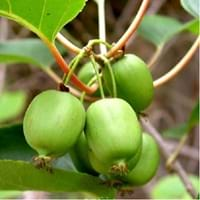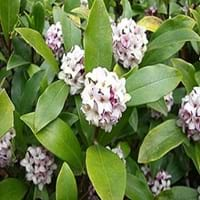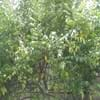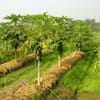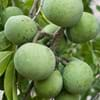Life Span
Perennial
Perennial
Type
Fruit
Broadleaf Evergreen
Origin
Eastern Asia
China
Types
Actinidia arguta, Actinidia giraldii, Actinidia hypoleuca
Not Available
Number of Varieties
Not Available
Habitat
Dappled Shade, open Woodlands
Upland
USDA Hardiness Zone
3-8
8-9
AHS Heat Zone
8-1
Not Available
Sunset Zone
1a, 1b, 2a, 2b, 3a, 3b, 4, 5, 6, 7, 8, 9, 14, 15, 16, 17, 18, 19, 20
21,22
Habit
Vining/Climbing
Oval or Rounded
Flower Color
White, Ivory
White
Flower Color Modifier
Bicolor
Bicolor
Fruit Color
Green, Yellow green
Crimson
Leaf Color in Spring
Green, Dark Green
Green, Dark Green
Leaf Color in Summer
Dark Green
Green, Dark Green
Leaf Color in Fall
Dark Green
Green, Dark Green
Leaf Color in Winter
Light Green
Green, Dark Green
Plant Season
Spring, Summer, Fall
Spring, Summer, Fall
Sunlight
Full Sun, Partial Sun
Full Sun, Partial Sun, Partial shade
Growth Rate
Medium
Medium
The pH of Soil
Neutral
Neutral
Soil Drainage
Well drained
Well drained
Bloom Time
Spring, Late Spring, Early Summer
Spring, Late Spring
Tolerances
Shade areas
Not Available
Where to Plant?
Ground, Pot
Container, Ground, Pot
How to Plant?
Grafting, Stem Cutting
Grafting, Seedlings
Plant Maintenance
Low
Medium
Watering Requirements
Average Water Needs, Requires regular watering
Do Not over Water, Medium, Never Over-water, Requires regular watering, Water more in summer
In Summer
Regular watering required
Lots of watering
In Spring
Moderate
Moderate
In Winter
Average Water
Average Water
Soil Drainage Capacity
Well drained
Well drained
Sun Exposure
Full Sun, Partial Sun
Full Sun, Partial Sun, Partial shade
Pruning
Remove damaged leaves, Remove dead branches, Remove dead leaves
Prune in early spring, Remove damaged leaves, Remove dead branches, Remove dead leaves
Fertilizers
Apply 10-10-10 amount, fertilize twice a year
Fertilize after blooming period, fertilize in growing season
Pests and Diseases
Botrytis head rot, Japanese Beetles, Leaf Rollers, Nematodes, Phytophthora, Root rot, Sclerotinia blight, Spider mites, Thripes
Red blotch
Plant Tolerance
Shade areas
Drought, Shade areas
Flower Petal Number
Single
Single
Foliage Texture
Medium
Medium
Foliage Sheen
Glossy
Glossy
Allergy
Not Available
Skin irritation
Aesthetic Uses
Cottage Garden
Beautification, Bouquets, Landscape Designing, Showy Purposes
Beauty Benefits
Not Available
Not Available
Environmental Uses
Shadow Tree
Air purification
Medicinal Uses
Antioxidants, Fiber, Folate, Rich in Potassium, Vitamin C
Diabetes, Nutrients, Wounds
Part of Plant Used
Fruits
Leaves
Other Uses
Grown for shade
Decoration Purposes, Showy Purposes, Used as Ornamental plant, Used in paper industry
Used As Indoor Plant
No
Yes
Used As Outdoor Plant
Yes
Yes
Garden Design
Edible, Feature Plant, Vine
Cutflower, Foundation, Mixed Border
Botanical Name
ACTINIDIA arguta
DAPHNE acutiloba
Common Name
Hardy Kiwi
Daphne plant
In Hindi
हार्डी कीवी
डाफ्ने संयंत्र
In German
Hardy Kiwi
Daphne Pflanzen
In French
kiwai
plante Daphne
In Spanish
kiwi hardy
planta de Daphne
In Greek
σκληραγωγημένα ακτινίδια
Δάφνη φυτών
In Portuguese
kiwi Hardy
Daphne planta
In Polish
hardy kiwi
Daphne roślin
In Latin
Hardy kiwi
Daphne plant
Phylum
Magnoliophyta
Not Available
Class
Magnoliopsida
Magnoliopsida
Family
Actinidiaceae
Thymelaeaceae
Clade
Angiosperms, Asterids, Eudicots
Angiosperms, Asterids, Rosids
Tribe
Not Available
Not Available
Subfamily
Actinidiaceae
Not Available
Number of Species
Not Available
Season and Care of Hardy Kiwi and Daphne
Season and care of Hardy Kiwi and Daphne is important to know. While considering everything about Hardy Kiwi and Daphne Care, growing season is an essential factor. Hardy Kiwi season is Spring, Summer and Fall and Daphne season is Spring, Summer and Fall. The type of soil for Hardy Kiwi is Loam and for Daphne is Loam while the PH of soil for Hardy Kiwi is Neutral and for Daphne is Neutral.
Hardy Kiwi and Daphne Physical Information
Hardy Kiwi and Daphne physical information is very important for comparison. Hardy Kiwi height is 550.00 cm and width 90.00 cm whereas Daphne height is 60.00 cm and width 90.00 cm. The color specification of Hardy Kiwi and Daphne are as follows:
Hardy Kiwi flower color: White and Ivory
Hardy Kiwi leaf color: Green and Dark Green
Daphne flower color: White
- Daphne leaf color: Green and Dark Green
Care of Hardy Kiwi and Daphne
Care of Hardy Kiwi and Daphne include pruning, fertilizers, watering etc. Hardy Kiwi pruning is done Remove damaged leaves, Remove dead branches and Remove dead leaves and Daphne pruning is done Prune in early spring, Remove damaged leaves, Remove dead branches and Remove dead leaves. In summer Hardy Kiwi needs Regular watering required and in winter, it needs Average Water. Whereas, in summer Daphne needs Lots of watering and in winter, it needs Average Water.
